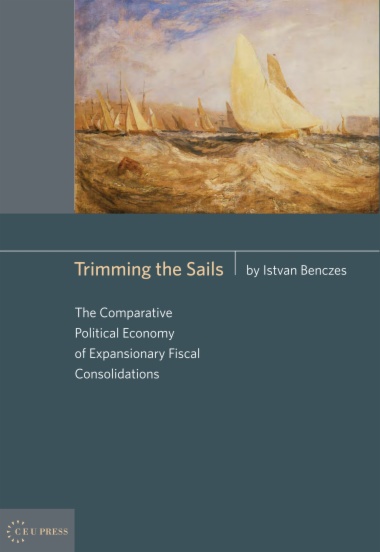The book provides a clear, multidisciplinary and systematic analysis of the relatively new concept of the so-called expansionary fiscal consolidations. This concept suggests that fiscal adjustment should not be in trade-off with economic growth if certain conditions are met. But why do only a few countries and only at certain times experience the expansionary effects, while others not at all? The necessary institutional conditions and circumstances have been totally neglected in the literature, or analyzed only partially at best.
- Title page
- Copyright page
- Contents
- List of Figures
- List of Tables
- Acknowledgements
- 1. Introduction
- 1.1 The puzzle: Expansionary fiscal consolidations
- 1.2 Scope of the book
- 1.3 Why a comparative political economy approach?
- 1.4 Sources and data
- 1.5 Structure of the book
- PART ONE: A Critical Assessment of the Concept of Non-Keynesian Effects
- 2. Stylized Facts of EU Countries’ Major Fiscal Episodes
- 2.1 Identifying exceptional fiscal episodes
- 2.2 Macroeconomic consequences I: Permanent consolidations
- 2.3 Macroeconomic consequences II: Economic growth
- 2.4 Summary
- 3. An Expectational View of Fiscal Policy: A Non-Linear Approach to Fiscal Consolidation
- 3.1 The traditional Keynesian view
- 3.2 The concept of a negative fiscal multiplier
- 3.2.1 Three explanations of non-Keynesian effects
- 3.2.1.1 Blanchard and his deterministic model
- 3.2.1.2 Sutherland’s stochastic model
- 3.2.1.3 A neoclassical formulation of non-Keynesian effects in the model of Bertola and Drazen
- 3.2.2 Testing for non-linearity in demand
- 3.2.3 Descriptive analysis of the EU-14
- 3.3 Intertemporal decisions—the modern theory of consumption
- 3.4 Non-Keynesian effects and the criticism of Hall’s stochastic model—the importance of liquidity constraints
- 3.4.1 Measuring liquidity constraint in developedeconomies
- 3.5 Summary
- 4. The Composition of Adjustment and the Structure of Labor Markets: A Linear Approach to Fiscal Consolidation
- 4.1 Linear effects on the supply side
- 4.2 The first step: Composition matters—restoring fiscal balance
- 4.2.1 Composition matters—in general
- 4.2.2 The composition of fiscal adjustment—some evidence from the EU-14
- 4.2.3 Country experiences
- 4.2.3.1 Ireland (1987–1989)
- 4.2.3.2 Denmark (1983–1984)
- 4.2.3.3 The Netherlands (1993 and1996)
- 4.2.3.4 The UK (1997–1998)
- 4.2.3.5 And the others
- 4.2.4 Summary
- 4.3 The supply-side channel: Non-competitive labor marketstructures
- 4.3.1 The changing characteristics of the European labor market and wage bargaining system in the Maastricht process—the revival of social pacts
- 4.3.2 Country studies
- 4.3.2.1 Ireland
- 4.3.2.2 The Netherlands
- 4.3.2.3 The UK
- 4.4 Summary
- PART TWO: Testing the Institutional Conditions of Non-Keynesian Effects in Hungary
- 5. Financial Intermediation in Hungary: A Comparative Perspective
- 5.1 An introduction to the study of financial intermediation in Hungary
- 5.2 Transformation and the legacy of the past
- 5.3 Stylized facts of the CEE financial markets
- 5.4 Banking activity in a comparative perspective
- 5.5 Hungary: The deepening of the financial sector
- 5.6 The housing market in Hungary
- 5.7 Vulnerability of the private sector
- 5.8 Summary
- 6. The Expenditure Side of the Hungarian General Government: A Decompositional Analysis
- 6.1 The stabilization process: The years of the Bokros package (1995–1997/8)
- 6.2 After stabilization—before deterioration (1997 and 2000)
- 6.3 Bringing back the past—the revival of fiscal indiscipline (2001–2004/05)
- 6.3.1 Wage policy and public sector employment
- 6.3.2 Welfare spending
- 6.4 Struggle without hope
- 6.5 Summary
- 7. Labor Market Structure and Wage Bargaining in Hungary: The (Ir)relevance of a Social Pact
- 7.1 The evolution of industrial relations in Hungary: a historical overview
- 7.2 Labor market implications of the enlargement: The three levels of social (non)dialog
- 7.2.1 The pivotal role of the state
- 7.2.2 Sectoral-level collective bargaining: The weakest chain
- 7.2.3 At the lower end of the spectrum: Company-level negotiations
- 7.3 About the irrelevance of a Hungarian social pact
- 7.4 Summary
- 8. Conclusion
- 8.1 Non-Keynesian effects at work
- 8..2 The Hungarian relevance of non-Keynesian effects
- References
- Appendix 1
- Appendix 2
- Appendix 3
- Appendix 4
- Index

